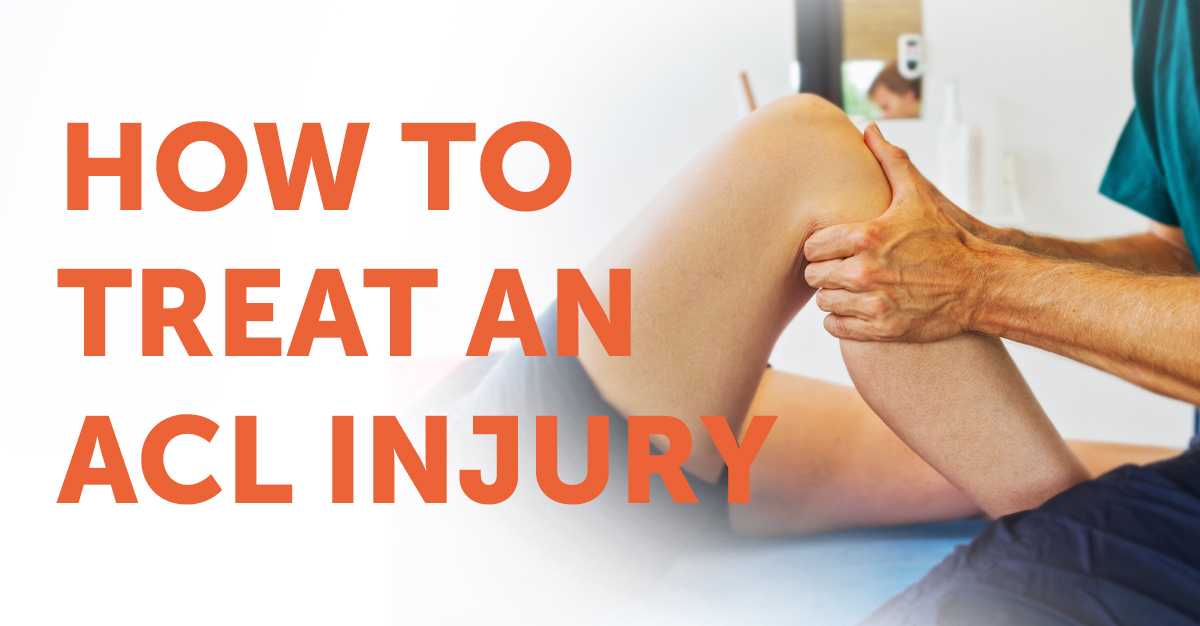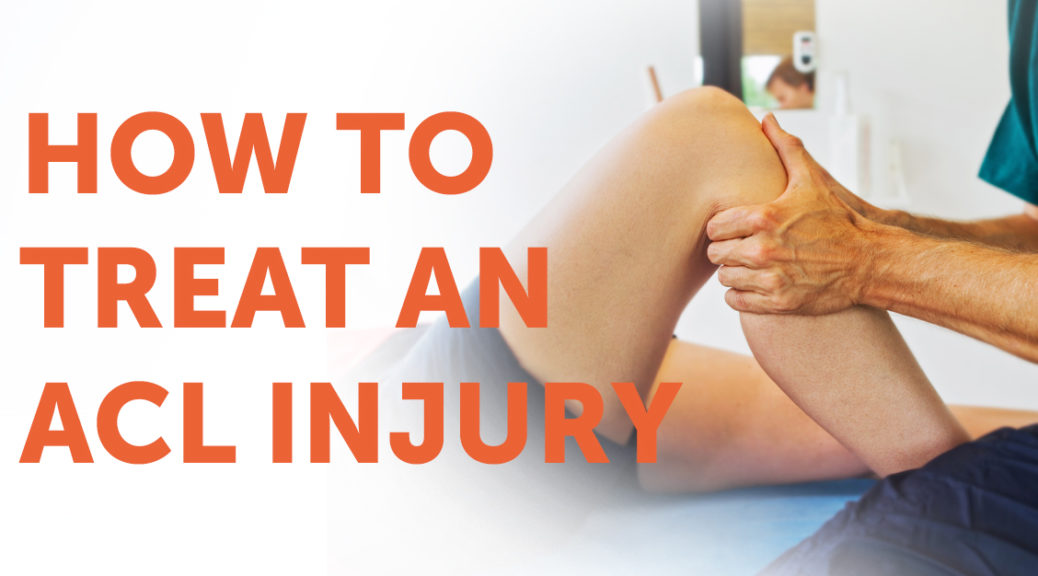
As summer concludes, we can see the beginning of fall sports coming around the bend. Football, Basketball, Soccer, Hockey, and Cross Country are fall sports enjoyed by many. If you participate in these sports throughout the fall, work with your athletic trainer and physical therapist to help prevent an ACL tear from occurring. If you do experience an injury, physical therapists are experts on how to treat an ACL injury and can effectively help you get back into your sport.
A tear to the ACL can be one of the most common forms of injury during fall sports. There are approximately 100,000 to 200,000 ACL injuries per year in the United States. This type of injury is common in both professional and recreational athletes across a variety of sports.
What is an ACL?
The ACL is formally known as your Anterior Cruciate Ligament. Ligaments, located throughout the body, are a type of durable, flexible tissue that connects bones and cartilage structures. The Anterior Cruciate Ligament, located in the knee, is placed to connect the thigh bone to the shin, which keeps the knee stable as you walk, run, and absorb impact throughout the day. The ACL is at constant work, especially during athletic activities, which is why it is a common injury amongst many athletes.
How do ACL Injuries Happen?
The ACL can withstand and absorb large amounts of impact, and particular stretches and exercises can help the durability of the ACL. However, this does not fully protect you from injury as something can happen during gameplay that can impact the overall health of your ACL.
The ACL can tear from both contact and non-contact movements. Roughly 70% of ACL injuries result from a non-contact motion in which the athlete attempts to change direction, slow down, or land. However, contact injuries result in a direct blow which causes the knee to bend inward or hyperextend.
The following non-contact motions are amongst the most common resulting in ACL injury.
- A sudden change of direction
- Pivoting with a foot planted in the ground
- An awkward landing from a jump
- Sudden stops
Symptoms & Signs of an ACL Injury
Soreness in the knee after physical activity is not a good indicator and can be a symptom of an ACL injury. More specific points of pain to look out for would be indicators such as:
- An audible pop sound or feeling in the knee
- Decrease in range of motion
- Inability to bear weight on the knee
- Trouble walking
- Severe swelling in the knee within a few hours of the initial injury
- Instability in the knee
If any of these symptoms relate to a knee injury that you are dealing with, don’t wait. Schedule an appointment immediately
What to do if You’ve Suffered an ACL Injury
There are precautions and steps to take to ensure the injury doesn’t progress and that you start a road to recovery that gets you back to 100% so you can continue playing the sport that you love.
First things first, after the impact of the injury, take all bearing weight off the knee. Doing this will help take the tension and pressure off the torn ligament. Using an ace wrap, ice wrap, and a knee immobilizer will also help reduce the swelling and movement of the knee, limiting further damage. Following these steps will help keep you more comfortable until a specialist can reach a diagnosis.
Reminder: Only a medical professional can truly determine the source of your pain. Do not self-diagnose your injury without consulting with a specialist.
How Medical Professionals Determine if You Have an ACL Injury
One of the most common ways a medical professional can determine if you have suffered an injury to your ACL is through the Lachman test. This test induces stress on the ACL. It conducts movement of the shin bone, and the feel of the endpoint (How solid the ligament feels) offers additional information about the condition of the ACL. Knees with a damaged or torn ACL may demonstrate more movement and a less firm endpoint during the Lachman test.
How to Treat an ACL Injury
Treatment to repair a torn ACL is highly individualized. Some patients will have to have their torn ACL repaired through surgery, while others can use non-surgical methods such as physical therapy. Treating an ACL Injury depends on the severity of the injury, and the performance levels reached prior to the injury.
Post-Surgery Physical Therapy for a Repaired ACL
Rehabilitation to the knee through physical therapy is crucial in getting you back to 100%. Physical therapy typically starts a few days after surgery and can last up to 3-4 months. There are protocols in physical therapy that allow patients to increase their range of motion, decrease swelling, and regain the strength of the knee. There are fewer complications when the patient participates in the rehabilitation program during physical therapy rather than trying to complete the exercises alone. So, if you’re suffering from an ACL injury, talk to your physical therapist to develop a strategy that is right for you.
Preventative Measures to Take to Keep Your ACL Healthy
There is not one or more given steps that can assure you won’t injure your ACL, but there are preventative measures that an individual can take to strengthen the ligament and help diminish the chance of it happening. These steps include things such as:
- Get a pre-examination or screening done by a physical therapist or a specialist. Doing this will ensure that you don’t have a pre-existing injury.
- Practice a good technique. Proper technique can help fend off injuries. Work with your trainer or physical therapist to identify any improper form and correct it.
- Avoid overworking your body when fatigued. When tired, it is easy to throw proper form and techniques out the window. Stopping your workout before exhaustion sets in helps to prevent injury.
- Create a balance between strength and flexibility. Core and extremity strength are important. Working on both in moderation is key to avoiding injury.
- Stay hydrated and eat a balanced diet that provides the proper nutrients to your body. Poor nutrition and dehydration lead to a decrease in strength, endurance, and attention. Keeping a balanced diet and staying hydrated will help improve focus, performance, and strength, reducing the risk of injury.
Physical therapists can help prevent injury but are also experts in how to treat an ACL Injury or tear. For more information about the services provided, please schedule an appointment or reach out to the location nearest you.

